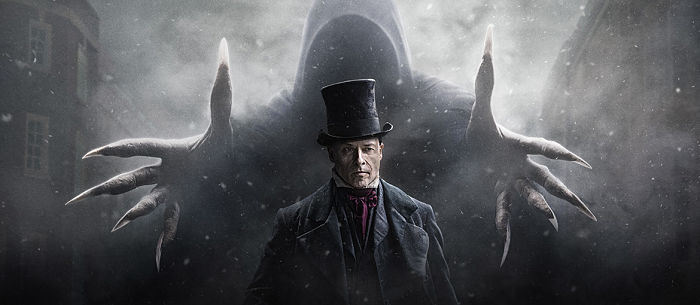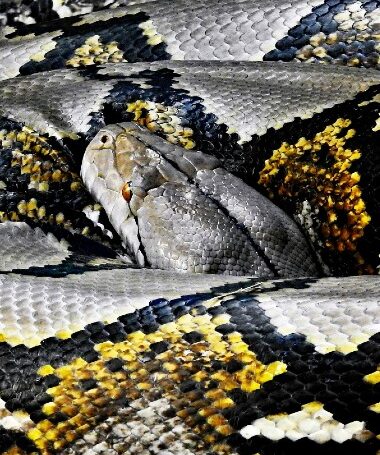Dickens’s Heart of Darkness – Not Your Muppet Christmas Carol

If you missed the broadcast of the new BBC/FX version of A Christmas Carol, it is well worth tracking down on a streaming service. While the production is occasionally bonkers, it brilliantly captures Charles Dickens’s passionate anger about social injustice in Victorian Britain. This is not a cozy story of a mean old man chivvied by a couple of bad dreams into playing Santa Claus to the family of his impoverished clerk. Marley and Scrooge are the calculating faces of a heartless capitalism that pursues profit at the cost of lives and souls.
The production’s tone is set from the opening scene where a teenage boy is shown urinating on Jacob Marley’s tombstone – the reason for this is explained at the end of the series. The drops trickle down into Marley’s coffin, where he lies as one of the undead, waiting for his eternal fate to be determined. Marley is in Limbo, where the Ghost of Christmas Past has made a chain from his sins. It will drag him down to hell and eternal torment unless he can persuade Scrooge to repent. Christmas Past has Bob Geldof’s accent, which may be intended as a reminder of Marley and Scrooge’s refusal to listen to prior warnings about their indifference to human suffering.
Much of the production works in flashback. Scrooge has a drunken, abusive and bankrupt father – much like Dickens’s own experience. His only lesson for his son is the importance of selfishness, of looking after one’s own interests regardless of the impact on others. This is dramatically captured by the revelation that his father has obtained a discount on Scrooge’s boarding school fees in exchange for making the boy available for sexual abuse by the headmaster. Such a topic could not be written about openly in mid-Victorian England, but it is certainly consistent with Dickens’s account of boarding school life in Nicholas Nickleby or workhouse life in Oliver Twist. Physical abuse and institutional neglect could be exposed but not sexual abuse. Scrooge is rescued by the intervention of his sister but the character deformation has gone too deep. He is now an Ayn Rand hero, concerned only with others insofar as they will profit him.
He finds a willing partner in Jacob Marley and together they operate as 19th century private equity capitalists. They spot a potentially profitable textile mill, ruined by the late owner’s gambling habit. The family are blackmailed into selling at a knock-down price to avoid scandal and bankruptcy – Marley and Scrooge have also bought up the firm’s debts. The workers are fired, the weaving frames are sold, and the mill demolished and redeveloped. A fat profit is turned and the boys are on their way. Other ventures follow, notably a Welsh coal mine, where the boys decide that too many pit props are being used. Their cost-cutting results in a roof collapse and the loss of many workers’ lives. A telling scene contrasts the mining community in their tin chapel commemorating their dead as an act of collective solidarity with the lone figure of Scrooge in his big house.
Perhaps the most uncomfortable expression of Scrooge’s character and beliefs, though, is his relationship with Mrs Cratchit. The casting of a mixed-heritage actor in this role produced some predictable criticism. Dickens’s London would, however, never have been exclusively white. As a great seaport, London has been a multi-cultural city for as long as it has existed. The production challenges simplistic assumptions about the street-level characters in Dickens’s work, who are never explicitly defined by colour. Remember that Dickens was writing before the high tide of 19th century racial science when skin colour would not necessarily have been a marker of distinction in ways that it became later. The pain here comes from Mrs Cratchit’s humiliation in the cause of Scrooge’s theories about self-interest. Mrs Cratchit goes to Scrooge without her husband’s knowledge to ask for a loan to pay for an operation on Tiny Tim. Scrooge tells her she can have the money if she returns later and does exactly as she is told. When she does, he engages her in a conversation about the price of virtue. She becomes impatient and undresses to try to get the experience over with. Scrooge brutally informs her that he has no sexual interest and was simply concerned to establish the price for which she would sell herself. He gives her the money and tells her to leave.
Meanwhile the visions presented by the Ghosts have been chipping away at Scrooge’s self-assurance. Marley is increasingly desperate to avoid damnation – but Scrooge is indifferent to the afterlife. Christmas Present is Scrooge’s beloved sister, who reveals more about her efforts to protect him from their father’s abuse and her continuing affection. Christmas Future shows the death of Tiny Tim in a drowning accident on an icy pond. The real breakthrough comes when Scrooge slips on some ice and is helped to his feet by an older woman who apologizes for not yet having sprinkled ashes to help passers-by get a better grip on the surface. She does not sprinkle the ashes out of self-interest but out of altruism for the benefit of unknown others. This gesture unlocks Scrooge’s thinking and leads to his plea to the Ghosts to do what they will with him as long as Tiny Tim is spared the death foretold. Marley is released from his chains and achieves eternal rest.
Scrooge, though, is not afforded the usual saccharine redemption. In his final encounter with the Cratchits, it is clear that he does not expect to be forgiven for his sins. His goal is simply to lead a life that does not invite further condemnation. There is no cozy Christmas dinner, although the Cratchits can look forward to a better life with Bob in a new job with much better pay and prospects. The one really false note is the final hint that all this has been brought about by Mary Cratchit’s use of African witchcraft. While this echoes themes in the production team’s other work, most notably Taboo, it exoticizes her character in a way that is inconsistent with what has gone before. It also detracts from the intellectual clash at the center of the story, about the proper balance between self-interest and altruism in successful capitalist societies.
This is a dark and sometimes scary Christmas Carol. It takes numerous liberties with the original. However, I suspect that it comes closer to the authentic vision of Charles Dickens than any previous version. The production has its imperfections – but it also has an energy and engagement that makes it well worth seeking out.





















































































